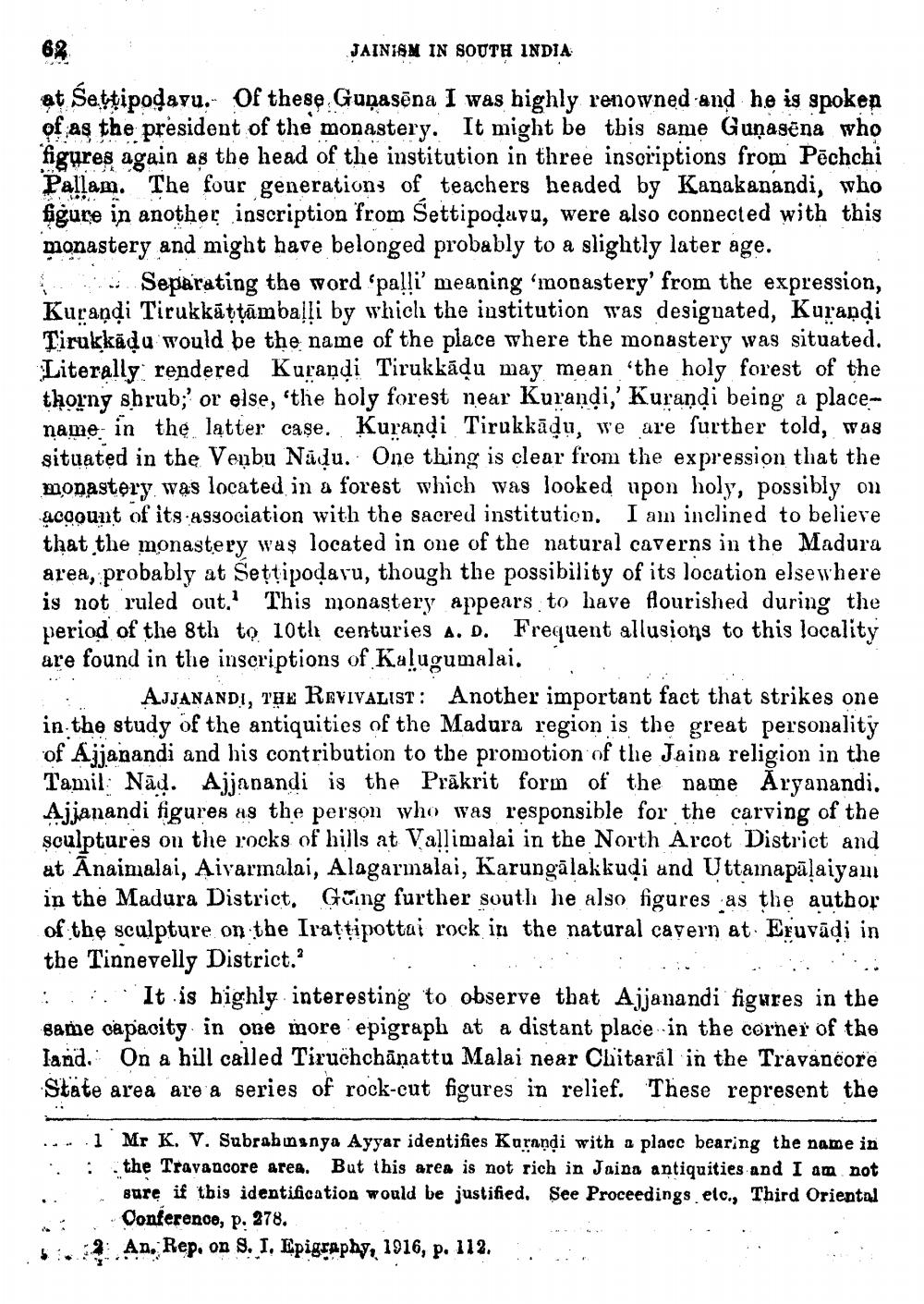________________
JAINIAN IN SOUTH INDIA at Settipodaru. Of these Guņasēna I was highly renowned and he is spoken of as the president of the monastery. It might be this same Guņasēna who figures again as the head of the institution in three inscriptions from Pēchchi Pallam. The four generations of teachers headed by Kanakanandi, who figure in another inscription from Settipodava, were also connected with this monastery and might have belonged probably to a slightly later age.
Separating the word 'palli' meaning ‘monastery' from the expression, Kuraņdi Tirukkāțțămbaļļi by which the institution was designated, Kurapdi Tirukkādu would be the name of the place where the monastery was situated. Literally rendered Kurandi Tirukkādu may mean the holy forest of the thorny shrub;' or else, 'the holy forest near Kurandi,' Kuradi being a placename in the latter case. Kurandi Tirukkādụ, we are further told, was situated in the Veņbu Nádu. One thing is clear from the expression that the monastery was located in a forest which was looked upon holy, possibly on account of its association with the sacred institution. I am inclined to believe that the monastery was located in one of the natural caverns in the Madura area, probably at Settipodaru, though the possibility of its location elsewhere is not ruled out. This monastery appears to have flourished during the period of the 8th to 10th centuries A. D. Frequent allusions to this locality are found in the inscriptions of Kalugumalai.
AJJANANDI, TŅE REVIVALIST: Another important fact that strikes one in the study of the antiquities of the Madura region is the great personality of Ajjanandi and his contribution to the promotion of the Jaina religion in the Tamil Nād. Ajjanandi is the Prākrit form of the name Aryanandi. Ajjanandi figures as the person who was responsible for the carving of the sculptures on the rocks of hills at Vallimalai in the North Arcot District and at Ānaimalai, Aivarmalai, Alagarmalai, Karungālakkuļi and Uttarapālaiyam in the Madura District. Güing further south he also figures as the author of the sculpture on the Irattipottui rock in the natural cayern at Eruvādi in the Tinnevelly District. . . . . . . .... :::. It is highly interesting to observe that Ajjanandi figures in the same capacity in one more epigraph at a distant place in the corner of the land. On a hill called Tiruchchāņattu Malai near Chitaral in the Travancore State area are a series of rock-cut figures in relief. These represent the
....
. : ..
Mr K. V. Subrabinanya Ayyar identifies Karandi with a place bearing the name in the Travancore area. But this area is not rich in Jaina antiquities and I am not sure if this identification would be justified. See Proceedings etc., Third Oriental Conference, p. 278. An. Rep. on S. I. Epigraphy, 1916, p. 112.
bi




